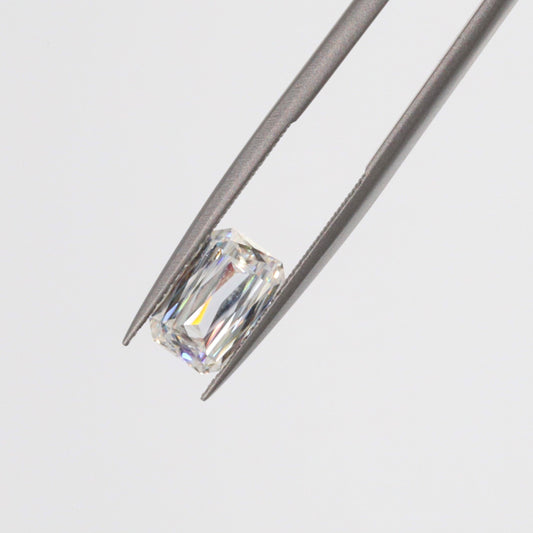Gemstones are some of the most valuable objects in the world. Coveted by royalty and commoners alike, they adorn everything from engagement rings to kings’ crowns.
And among gemstones, there are some considered to be top of the line. Called rare gems, these pieces are incredibly valuable and exceptionally beautiful. They are, without a doubt, worthy additions to any collection. While diamonds always make the cut, there are plenty of other gemstones that are much rarer and worth a second look.
What are Rare Gemstones?
What makes collectable gemstones “rare” can be attributed to two things: their availability and extraordinary physical qualities.
Gems with limited availability are understandably rare and pricey, thanks to the laws of economics. This scarcity can be due to scant supply in nature or because they’re difficult to mine. Thus, gems mined in nature are generally more expensive than lab-grown varieties, which are readily available.
While supply is one way to look at a gemstone’s rarity, another way is to look at its unique properties. Rare gems jewelry with exceptional carat, clarity, or color, crafted with the utmost skill, are considered one-of-a-kind. A good example is the 45.52-carat Hope Diamond.
What are Popular Rare Gemstones?
When talking about collecting stones, it’s hard not to include diamonds in the picture. Most people refer to them as the rarest and most valuable gem in the world. But are they really?
Let’s consider that diamonds can only grow far beneath the surface of the Earth, so far down that they’re inaccessible to humans. The only reason we can mine them at all is that they were brought closer to the surface due to geological events like volcanic eruptions millions of years ago.
Unfortunately, this means that the diamonds we have access to today are all we’ll ever have. Once that runs out, we won’t have more to mine. That might make diamonds exceptionally rare and as a result, exceptionally expensive.
But with the discovery of the Kimberley Mine in South Africa and advancements in gemology, it’s now one of the most mined valuable gems globally. So while diamonds can be considered rare from a strict definition, they aren’t really, given how commonplace they are.
Best Collectible Gemstones
If you’re serious about starting your collection, here are some must-have rare gem stones to seek out.
-
Alexandrite
Alexandrite is one of the most unique rare stones you’ll ever see. First discovered in Russia’s Ural Mountains, this rare chrysoberyl variety has an incredible ability to change colors. It usually takes on a bright green and blue hue during the day but transforms to a ruby-like red at night. This one-of-a-kind property makes it the best gem to collect if rarity is your goal.
-
Ammolite
Ammolite is a super gemstone that’s a class of its own. This organic gem is made from the fossils of marine mollusks, giving it a mesmerizing iridescence. It’s capable of displaying the entire spectrum of the rainbow, which is the basis for its high price. It’s also extremely rare, being mined only in the Rocky Mountains.
-
Tanzanite
Mined only in Tanzania, Tanzanite is similar to sapphire but with a more intense hue. It also has pleochroism properties, meaning it shifts color from blue to green-brown depending on the angle. Another interesting detail about Tanzanite is that it’s considerably less expensive than sapphire, despite being much rarer.
-
Golden Sphalerite
This is a rare gem that hasn’t entirely caught on yet, meaning collectors can get it for a relative bargain. Sporting a light to dark yellow hue, one of the best characteristics of this gemstone is its brilliant sparkle and fire that’s three times more intense than diamond.
-
Spinel
Spinel is a gemstone that naturally occurs in a wide variety of colors. This property was unfortunately exploited as synthetic spinel was often used to pass for sapphires and rubies. But natural spinel is incredibly rare, and it can be a worthwhile goal to collect the various natural hues that it comes in.
-
Moissanite
Moissanite is a stone born from the stars – literally. Dr. Henri Moissan first discovered it in a meteor site in Arizona. What he first thought was a diamond turned out to be crystal silicon carbide.
Because of its extraterrestrial source, natural moissanite is incredibly rare. But thanks to modern technology, it can now be successfully replicated in a lab. Moissanite mimics many of the things that make a diamond so desirable and much more. Compared to diamond, moissanite has a higher level of dispersion and ability to reflect light. That makes it shine even more brightly with exceptional sparkle and fire.
How to Collect Gemstones Sustainably
One of the responsibilities of a gem collector is to determine how and where the stone was mined. When you shop moissanite from Gema&Co, you are rest assured that it was sourced responsibly and conflict-free. And our lab-grown variants are just as brilliant, beautiful, and collectible as real diamonds for a much lower price.
Contact us today and start building your moissanite gemstone collection.




